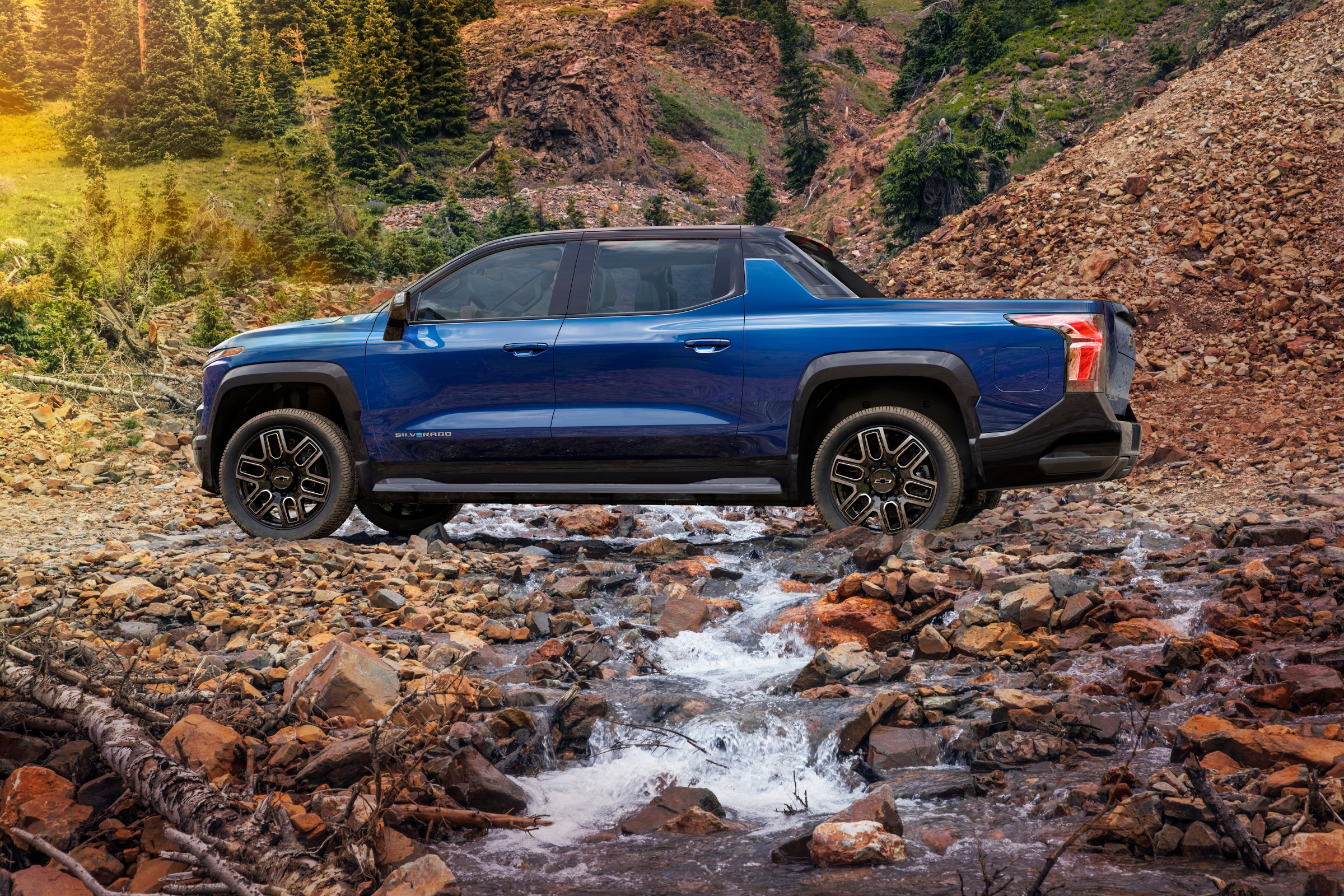
Way back in 1996, General Motors was at the forefront of decarbonizing transportation. In response to a California state mandate, the company had developed a quirky-looking compact car, dubbed the EV1, that ran on 26 12-volt lead-acid batteries. But GM soon reversed course, moving from EV booster to principle litigant in a 2001 case suing California over the state’s efforts to promote zero-emission vehicles, and scrapping the EV1 project in 2003.
Following Tesla’s rise to EV dominance, and a consensus among governments that the vehicle industry could not keep pumping out gas-powered cars and trucks indefinitely, GM has joined a scramble for pole position in the new industry. Early last year, GM announced the launch of a new electric Hummer “supertruck,” and has since committed $27 billion to EV development as part of what it has termed an “aspiration” to sell only electric vehicles by 2035. At the 2022 CES conference on Jan. 5, the auto giant showed its next hand in its electric gamble—a new electric version of the company’s top-selling Silverado pickup, aimed at converting longtime truck owners to a battery vehicle age.
Read More: Best Tonneau Covers to Outfit Your Truck
The stakes couldn’t be higher for GM. At this point, it’s apparent that any automaker that fails to convert to battery offerings might find itself trapped with shrinking profits in the next decade or two. While losing ground to makers of EV sedans and sports cars isn’t much to the big-three American automakers—GM, Ford and Stellantis (formerly Fiat Chrysler)—which all make their real money in trucks and SUVs, an assault on their core pickup business, and its fat profit margins, would hit them where it hurts. “They’re not joking around when it comes to trucks,” says Jessica Caldwell, an analyst at Edmunds, a car buying guide. “That’s the majority of their business right there.”
Few mass-market electric pickups have hit roads yet, but competition is heating up. Among the longer-tenured companies, Ford unveiled an electric F-150 pickup in May, and Ram, a Stellantis brand, is planning to start selling an electric pickup in 2024. And newer entrants are making inroads as well: Tesla has been hyping its “Cybertruck” for months, and Rivian, flush with IPO cash, aims to disrupt the established order of big three-dominated pickup sales.
GM is already late to the game. At the earliest, the electric Silverado will be available for purchase in the second half of 2023—Ford expects to start shipping electric F-150s in spring of this year.
In terms of specs, the Silverado EV appears to stand up fairly well against the competition. GM has boasted of an impressive 400-mile range, and says it will offer an unadorned, work-oriented model for commercial buyers that starts at just under $40,000. A luxury variant for consumers, fitted out with extra features, will sell at suggested price point over $100,000 (more moderately-priced consumer versions with fewer bells and whistles will be rolled out later as production ramps up), GM says. The top-of-the-line version has a 0-60 time of 4.5 seconds, similar to Ford’s F-150 Lightning EV, and a hefty 664 horsepower, along with four-wheel steering for executing tight corners at low speed and an optional multi-hinge tailgate that locks into different configurations to expand capacity or provide a step up to the truck bed. Like the F-150 Lightning, the electric Silverado can double as a mobile generator to plug in power tools or appliances.
Gas guzzling pickups are incredibly popular in the U.S., accounting for 20% of all new auto sales in 2020 according to Motor Intelligence. If the county’s pickup-truck owners transitioned to electric vehicles en masse, it could have a sizable climate impact. But buyers have to actually go for them. Switching to EV pickups is likely to save owners a lot in the long term, with no more fill-ups and fewer trips to the repair shop. And carmakers like Ford and GM have bundled on extra features—like those power-tool charge ports—to sweeten the deal. But some analysts are skeptical that early electric pickups will take off in a big way beyond coastal areas where EVs are already popular. For one thing, states with the highest number of pickup drivers overlap substantially with those that have the worst charging infrastructure.
Despite the heady words from executives at industry conferences, and sparkly features on the new EV pickup offerings, it’s hard not to feel disappointed about what could have been. Had automakers like GM not resisted EV mandates for so long, American society likely would have started this transition away from gasoline vehicles years sooner, buying valuable time in the race to counter climate change. In that sense, the current state of the EV market says a lot about the ways that businesses tend to respond to societal pressure. When they want to, giant companies are capable of dramatic pivots and transformative new technologies—but they only tend to do so when their profits are on the line.
More Must-Reads from TIME
- Donald Trump Is TIME's 2024 Person of the Year
- TIME’s Top 10 Photos of 2024
- Why Gen Z Is Drinking Less
- The Best Movies About Cooking
- Why Is Anxiety Worse at Night?
- A Head-to-Toe Guide to Treating Dry Skin
- Why Street Cats Are Taking Over Urban Neighborhoods
- Column: Jimmy Carter’s Global Legacy Was Moral Clarity
Write to Alejandro de la Garza at alejandro.delagarza@time.com